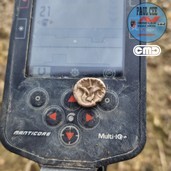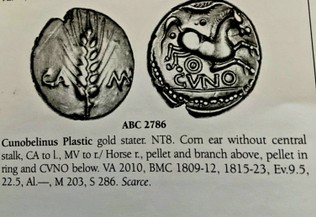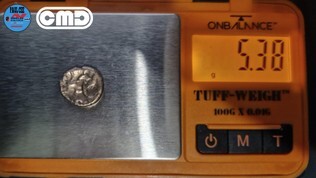ancient gold coin found metal detecting
Published by Paul Cee in metal detecting Finds · Saturday 03 Feb 2024

Ancient Gold Coin found with a metal detector
Travelling to lincolnshire for a small weekend away metal detecting, we had the minelab manticore detector for the weekend. the journey was only short so arrived at the site know for its rich history from iron age occupation through the roman period right up to modern day habitation, so finds could be absolulty anything.
We set up the Manticore to suit where we was detecting, checking ground balance and recovery speed and also where the iron in the ground was falling in the ferrous limits area of the Manticore 2D screen so we could adjust if needed.
The 1st day was digging just general junk (foil, and bits of tin can) along with a few modern (Pre-Decimal pennies and copper coins)
Old Maps and Lidar
Day 2 started out pretty much the same, but then i remebered to use the ARCHI UK app to look at old maps and Lidar.
I noticed that the 2 trees that were in the middle of the fields were once along a field boundary with a track (obsereved on lidar) through the middle, not having found much of interest i decided to give this area a go. Well I took about 20 steps and there was a signal, it wasnt deep and read about 56/57 on the manticore 2D screen. I hadnt had a signal in that target id range this weekend so wasnt sure if it was going to be another copper coin or more tin-can, so in went the spade to dig out the target.


About the CATUVELLAUNI CELTIC TRIBE
The Catuvellauni (Common Brittonic: *Catu-wellaunī, "war-chiefs") were a Celtic tribe or state of southeastern Britain before the Roman conquest, attested by inscriptions into the 4th century.
The fortunes of the Catuvellauni and their kings before the conquest can be traced through ancient coins and scattered references in classical histories. They are mentioned by Cassius Dio, who implies that they led the resistance against the conquest in AD 43. They appear as one of the civitates of Roman Britain in Ptolemy's Geography in the 2nd century, occupying the town of Verlamion (modern St Albans) and the surrounding areas of Hertfordshire, Bedfordshire and southern Cambridgeshire.
Their territory was bordered to the north by the Iceni and Corieltauvi, to the east by the Trinovantes, to the west by the Dobunni and Atrebates, and to the south by the Regni and Cantiaci.
Here is the Video of the time it was found.
3 reviews
